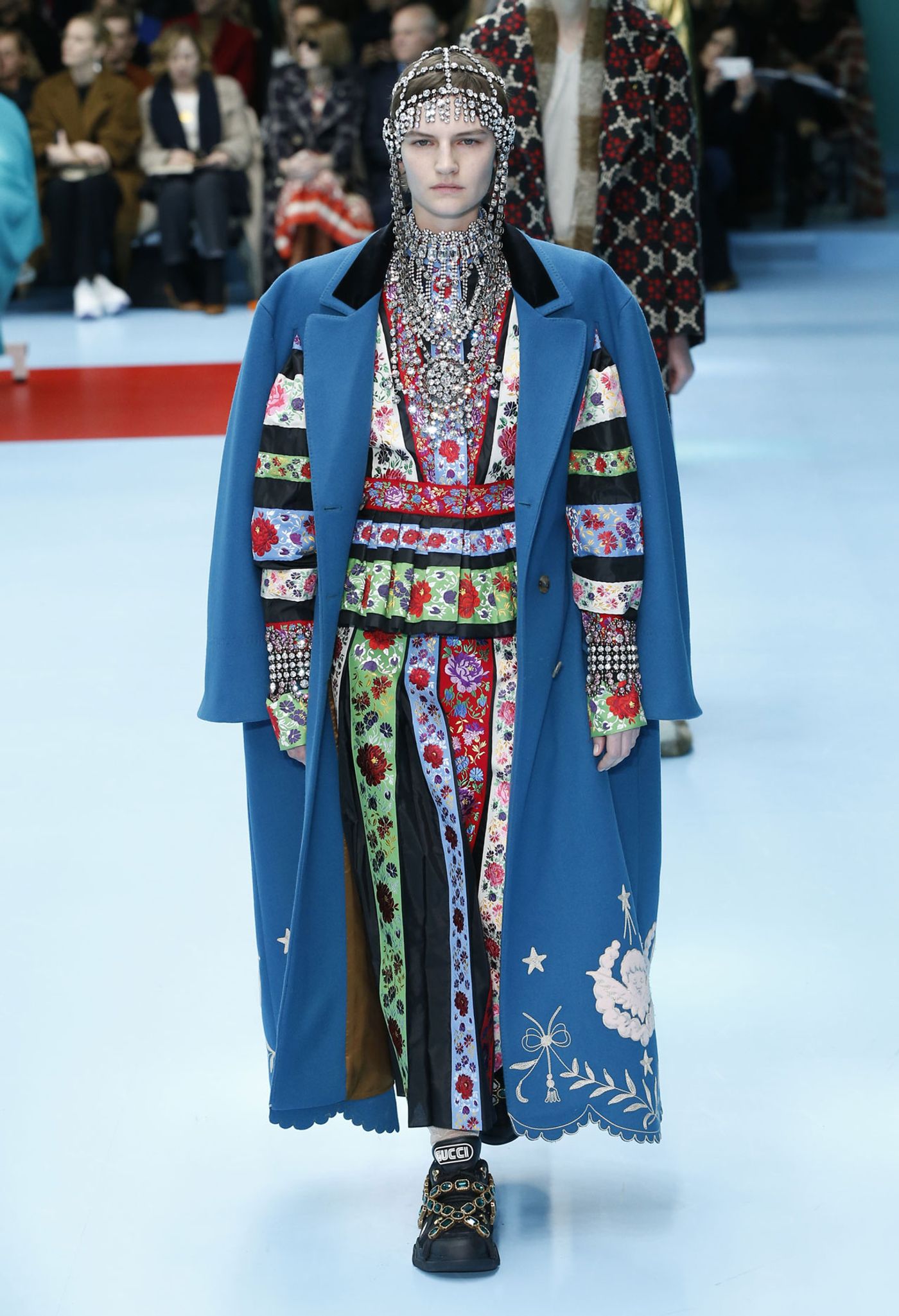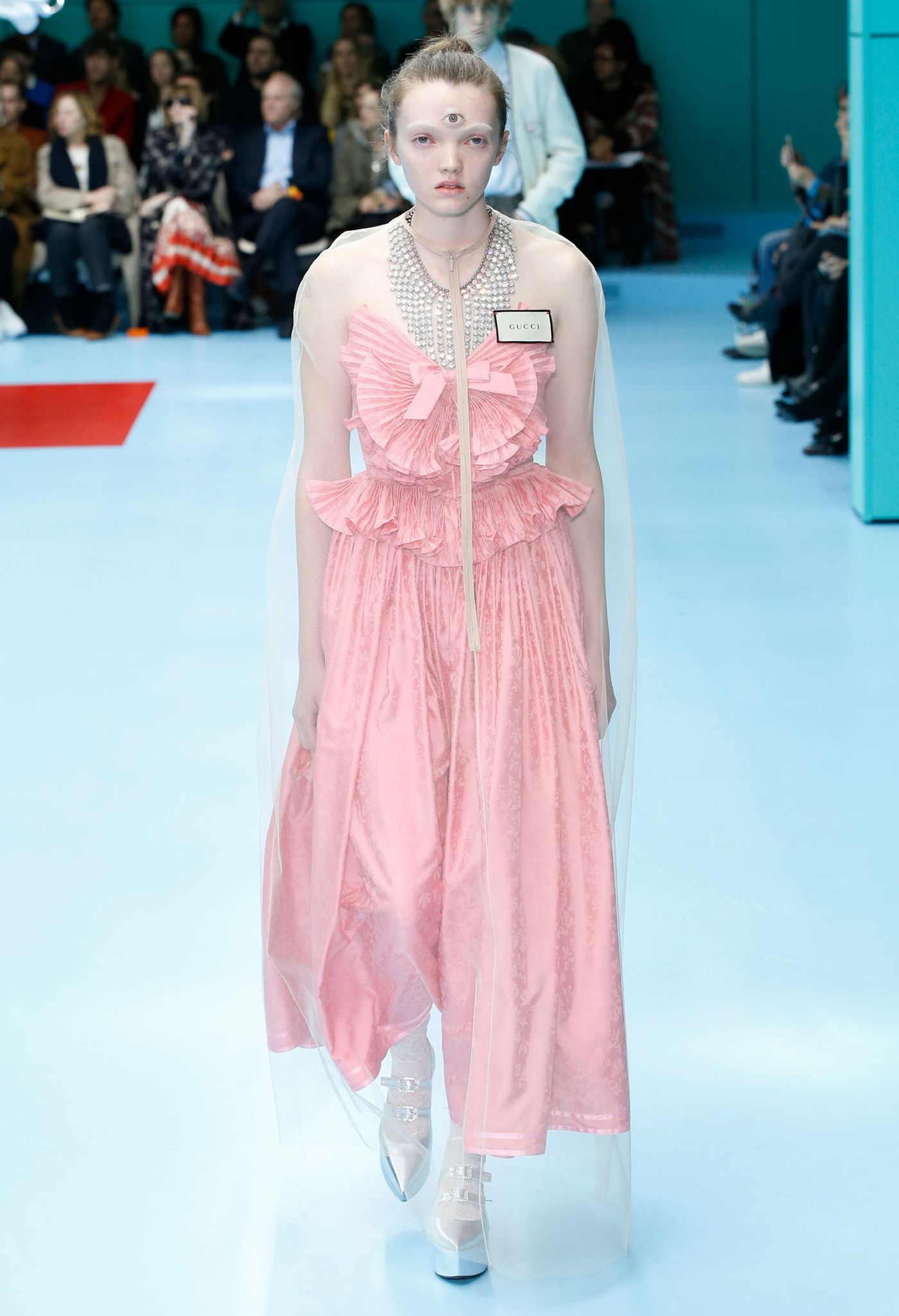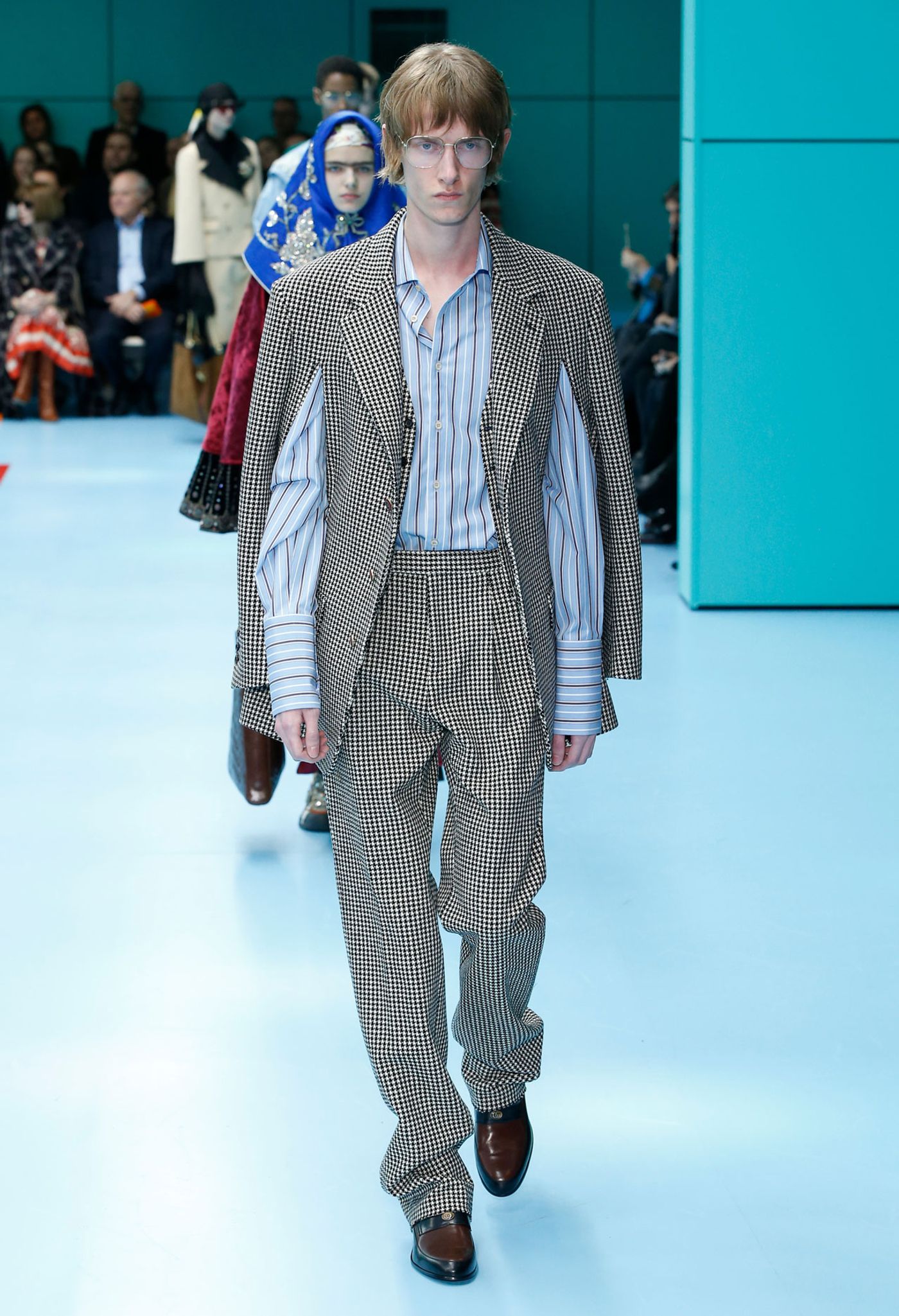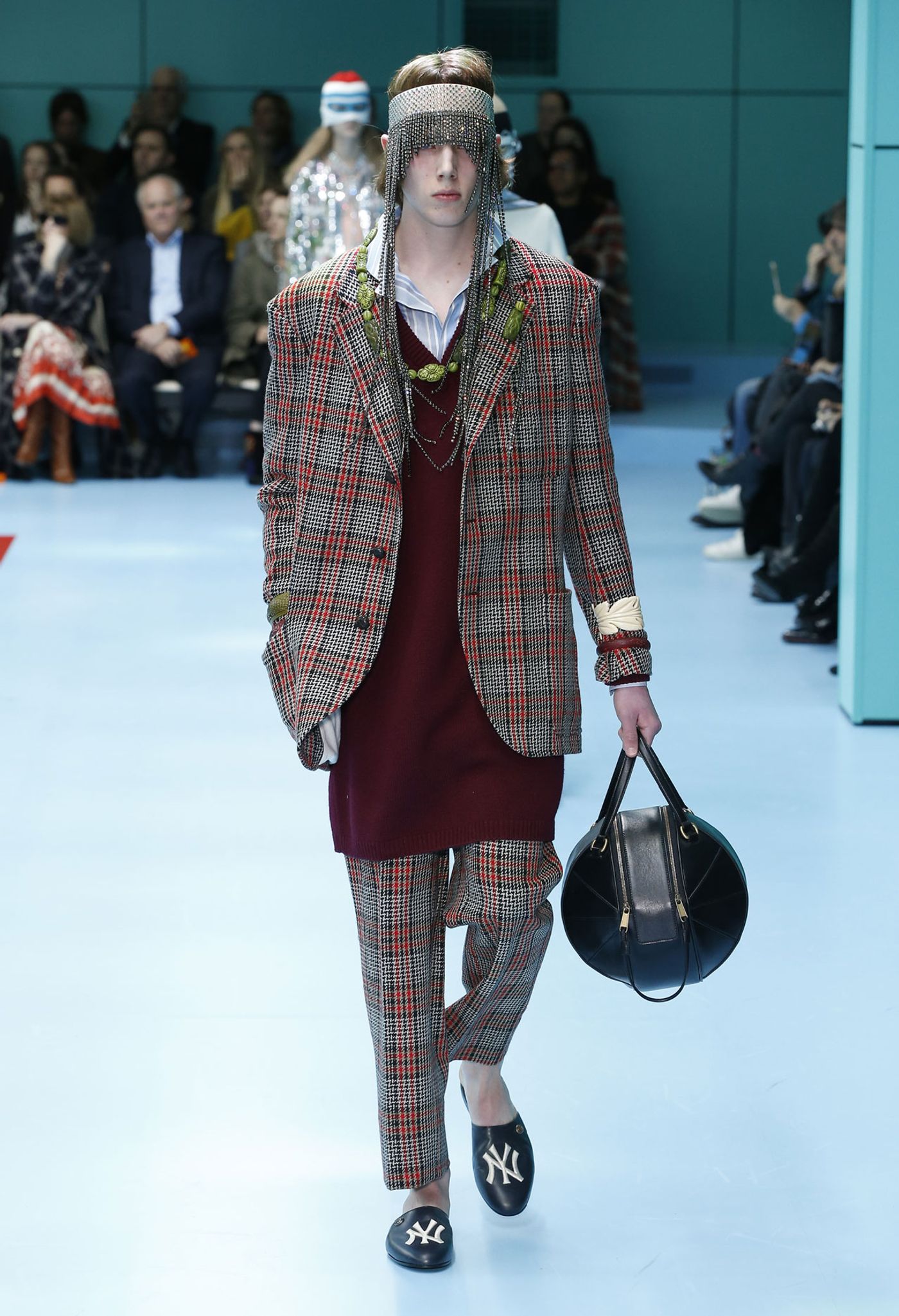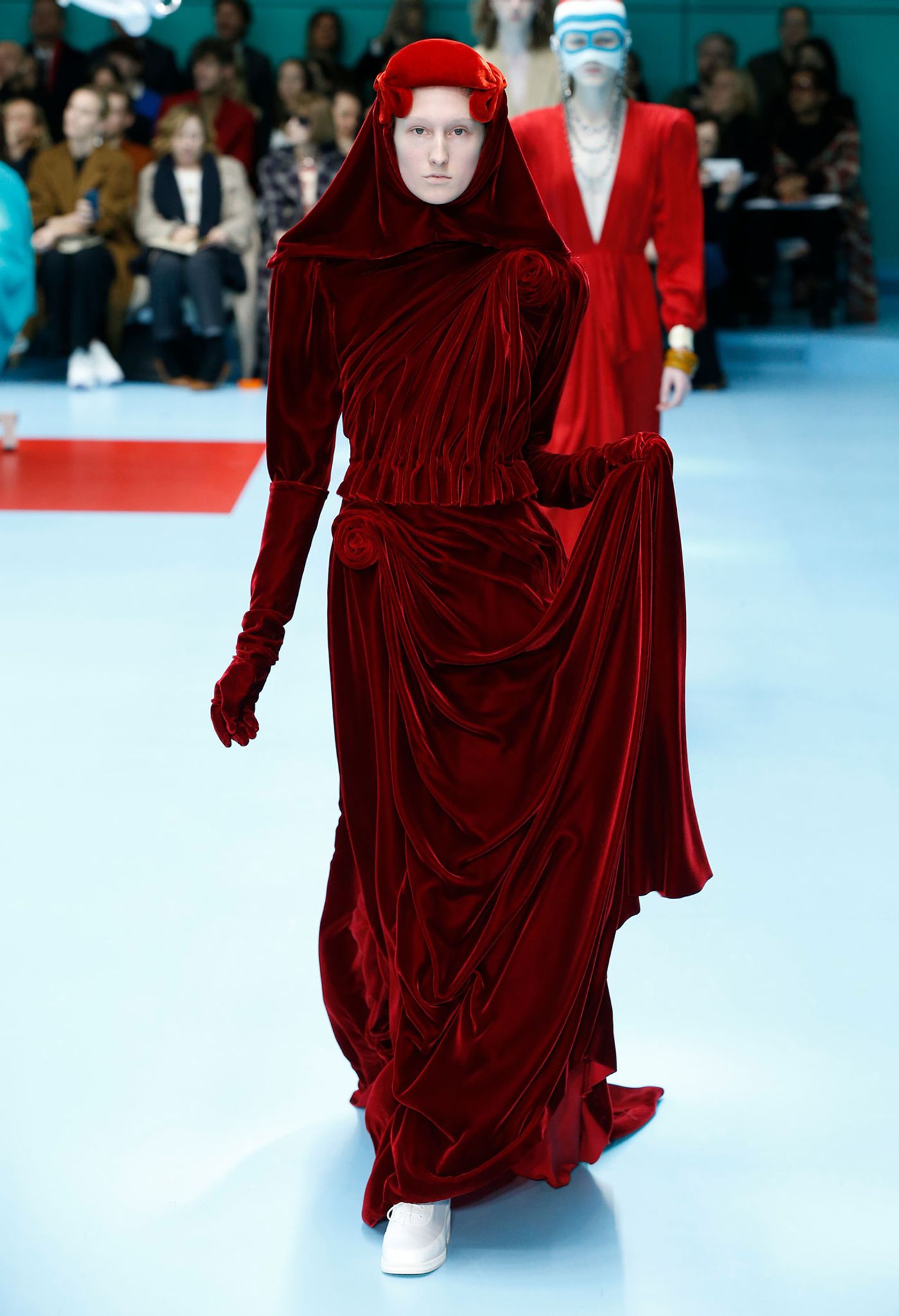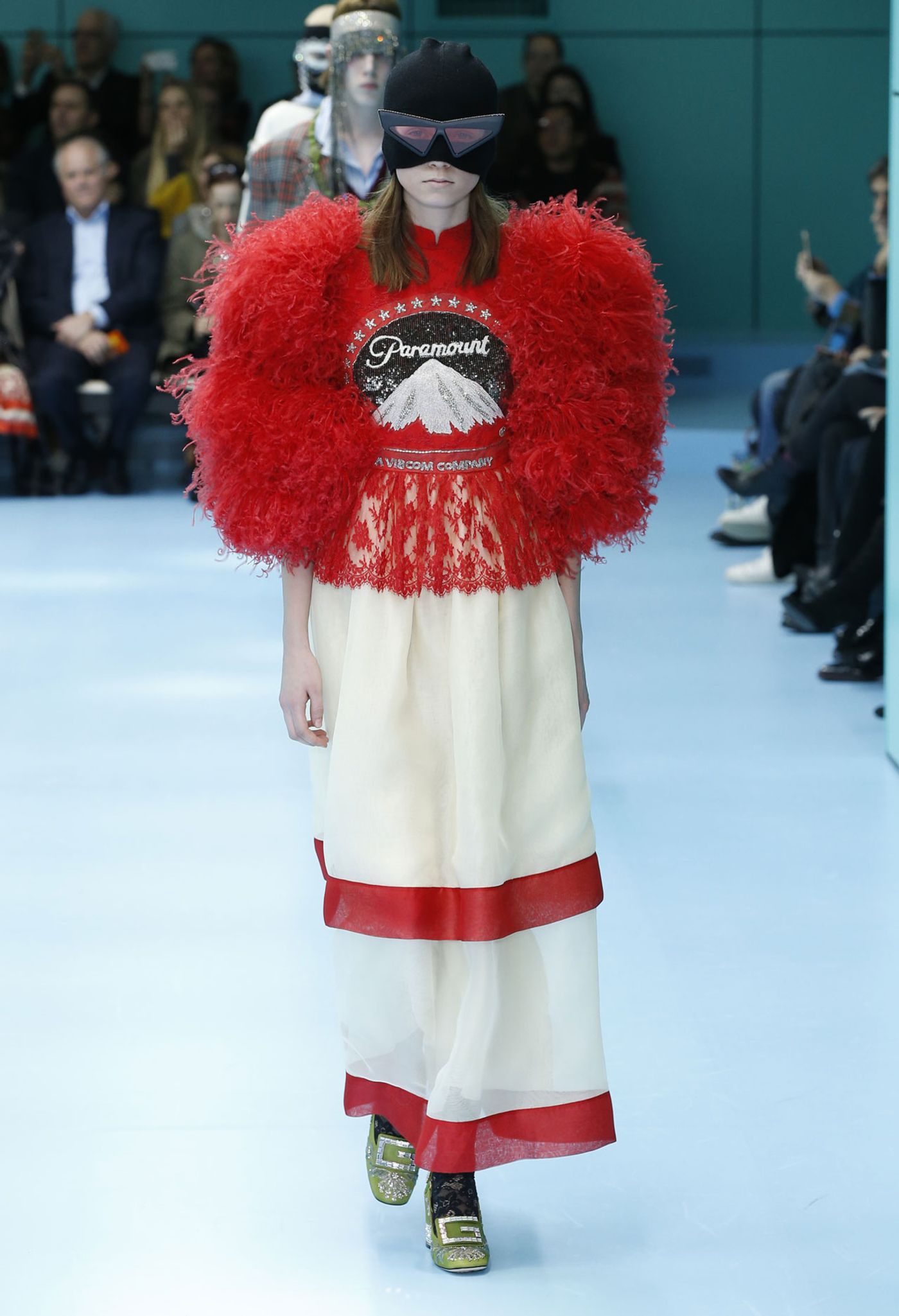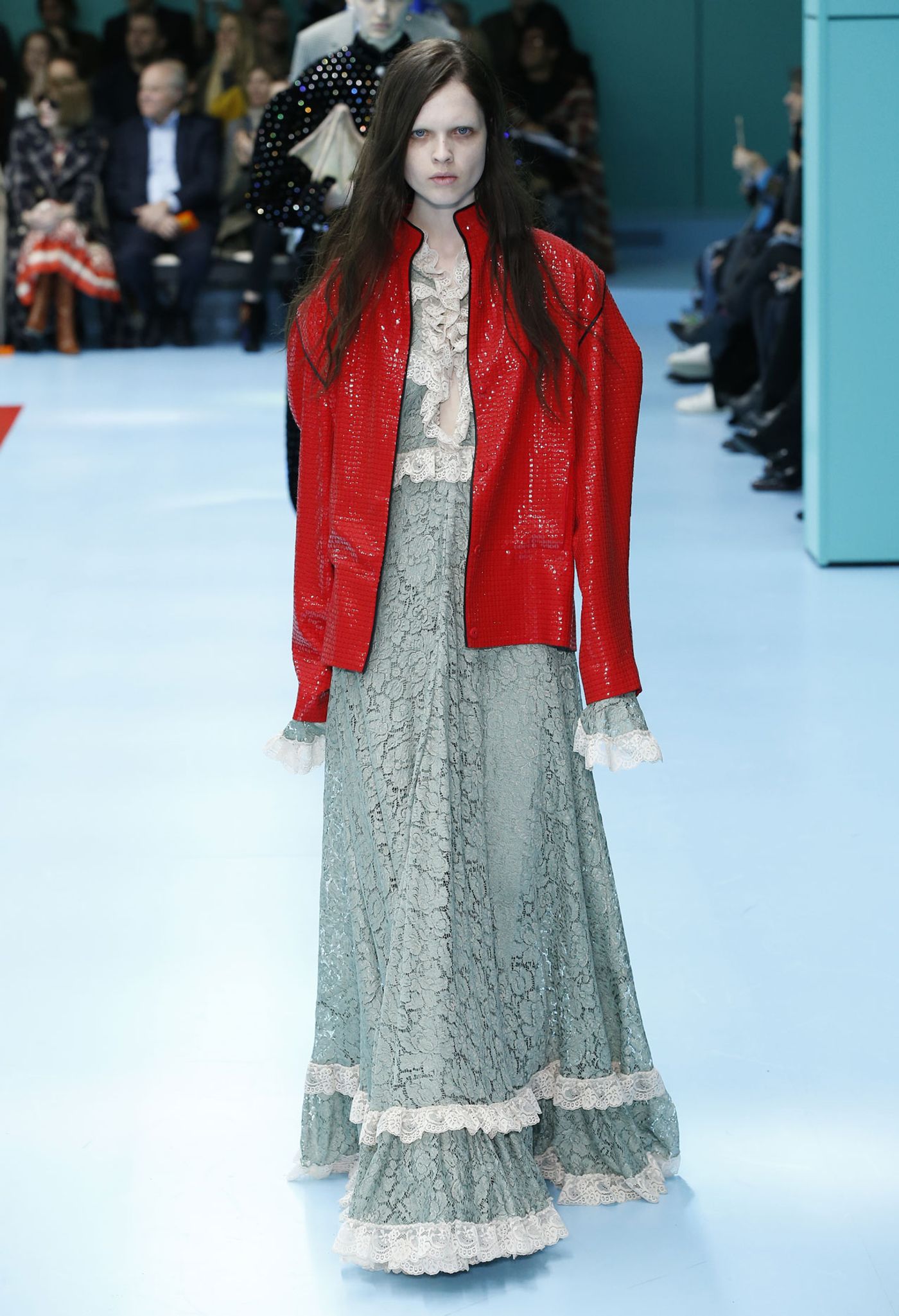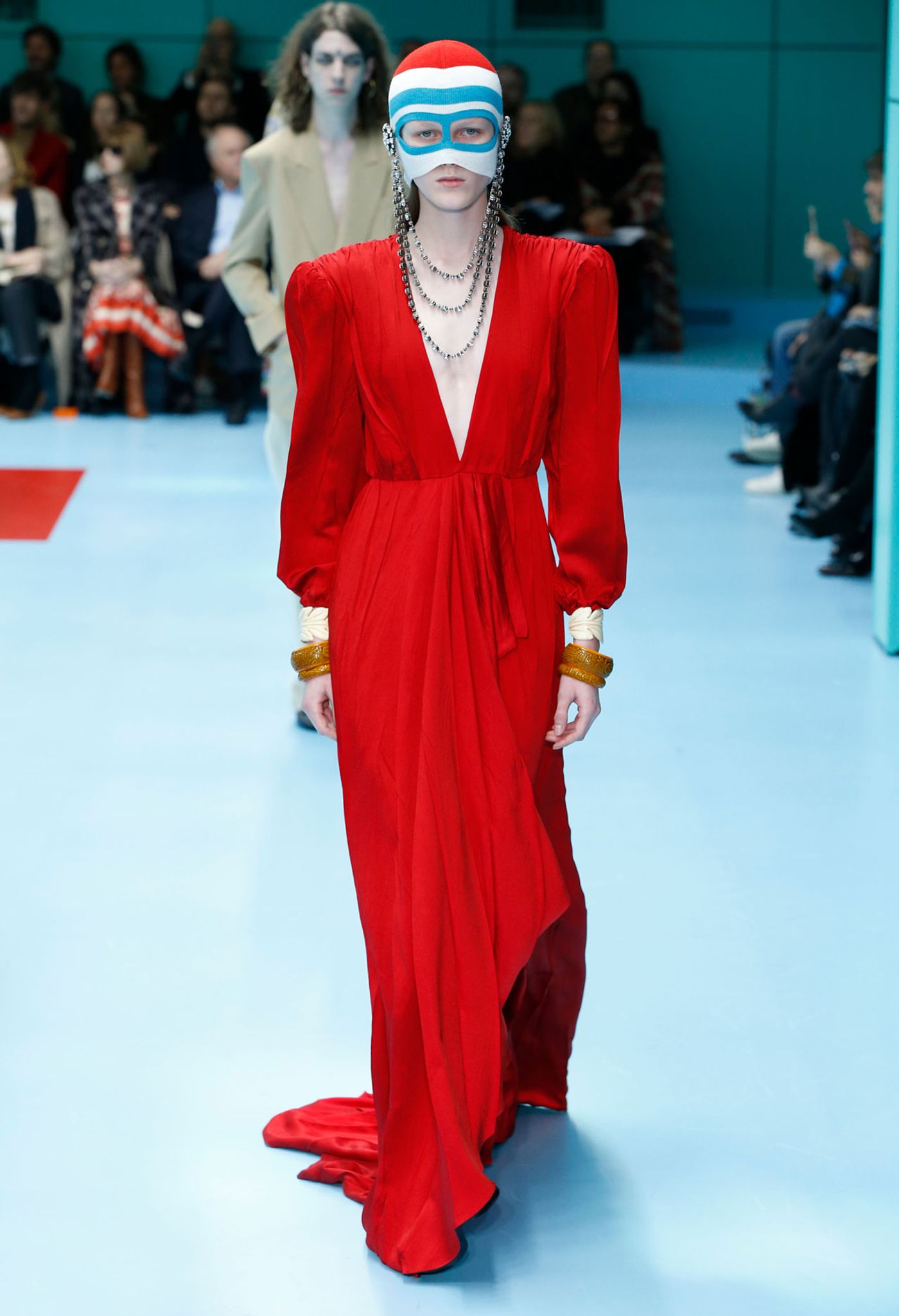GUCCI CYBORG: A Chimeric World of Fluid Identities and Trend-Defying Fashion
Words by Eric David
Location
Milan, Italy
GUCCI CYBORG: A Chimeric World of Fluid Identities and Trend-Defying Fashion
Words by Eric David
Milan, Italy
Milan, Italy
Location
Cyborgs have always seduced the human imagination with the endless possibilities that a merger of man and machine entails. From Mary Shelley’s Frankenstein and Fritz Lang’ Metropolis to Blade Runner and Robocop, the union of the organic and the synthetic conceal an inherently utopian vision of self-determination, and the freedom to go beyond the rigid classification of human identity that society has imposed. This is the premise of Gucci Cyborg, Gucci’s Fall/Winter 2018-2019 fashion show that recently took place in Milan showcasing Alessandro Michele’s latest collection: a sensational parable of hybrid designs, cross-cultural references, clashing aesthetics and brazen symbols that speaks of the possibility of being liberated from the confines of the natural condition we are born into.
Inspired by feminist philosopher Donna Haraway’s 1984 “A Cyborg Manifesto: Science, Technology, and Socialist-Feminism in the Late Twentieth Century”, Michele has created his own visual manifesto challenging the binary categorization of human identity that is forced upon us as a means to both control and regulate us. Identity is neither immutable nor fixed but rather a social and cultural construction, and as such it can be adjusted, redefined or even invented. This is the spirit that inspired Michele’s collection, to legitimize what is considered anomalous, flawed or atypical, manifested in the creative fusion of seemingly incongruous fabrics, patterns and references.
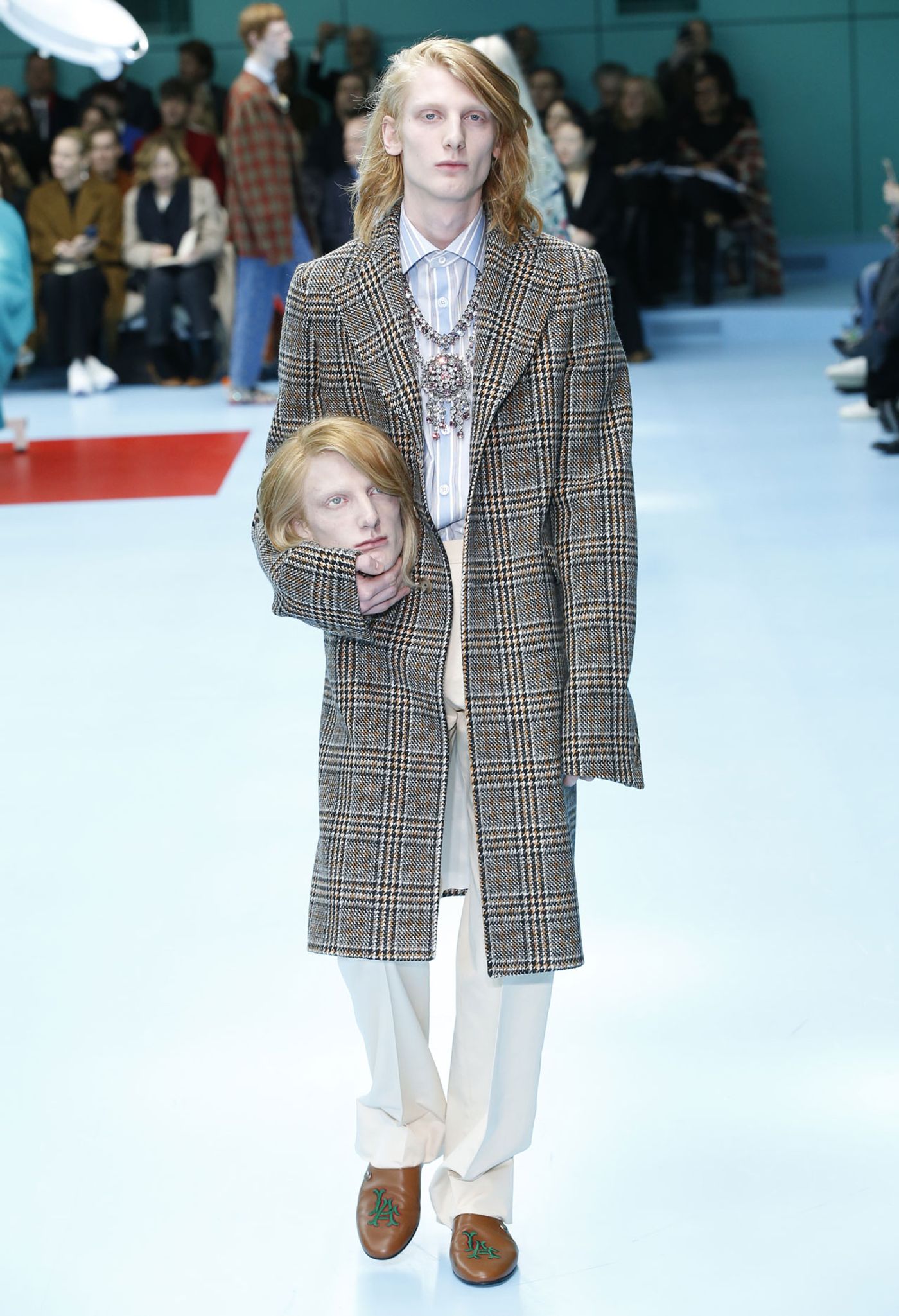
Courtesy of Gucci.
Gucci Fall Winter 2018 Fashion Show: Short Edit

Courtesy of Gucci by Ronan Gallagher.
The show took place in a sterile, lab-like environment of mint green hues, which was more of an operating theatre than catwalk, complete with operating tables and surgical lighting. Sitting on the rows of plastic chairs, the guests became in effect witnesses to the apocalyptic aftermath of a series of surgical procedures that produced the transhuman creatures strutting in front of them. What, after all, is at the core of any artistic creation than the birth of an idea, graphically manifested in this case through the allegorical birth of Michele’s collection in the confines of a conceptual delivery room?

Courtesy of Gucci by Ronan Gallagher.

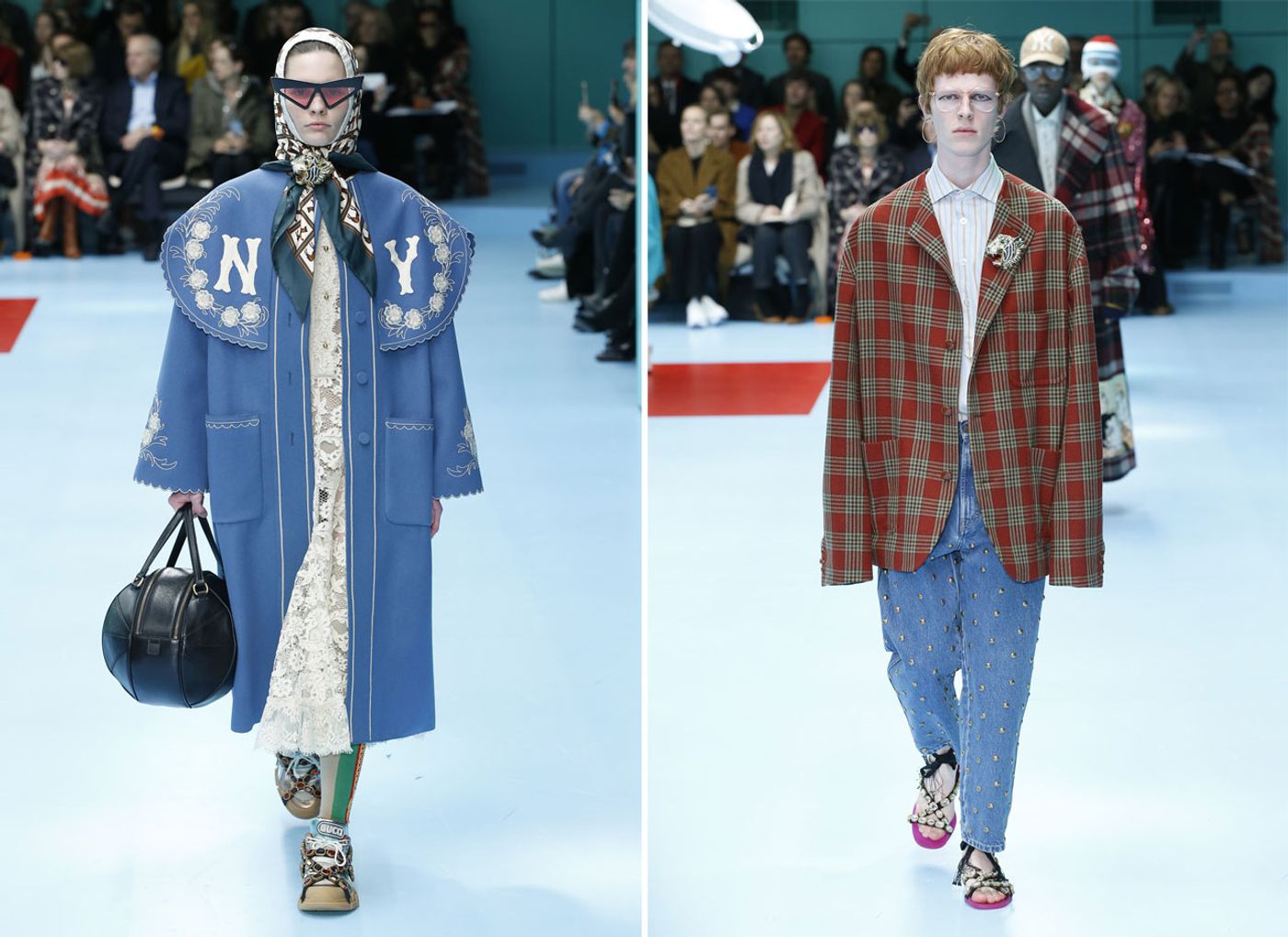
Courtesy of Gucci.
And what emerged out of this “medical” procedure was nothing sort of formidable: Models carrying iguanas, coral snakes, baby dragons and, lo and behold, replicas of their own heads. There was even a catwalking fawn. Naturally, the clothes and accessories were as outrageous and off-kilter as the parade of humanoids that wore them. The show saw Russian babushka headscarves, pagoda hats and Chinese pyjamas gave way to Sikh turbans, fancy balaclavas and medieval chainmail body jewellery, English tweed and Scottish plaid juxtaposed with ruffled lamé dresses and gold leather peplum jackets, and a head-to-toe red velvet gown paired with white sneakers followed by knee-length sweaters over baggy chinos. Then there were the logos: emblazoned on coats, jackets, bags and sweaters, oversized Paramount Pictures and Yankees logos intermingled with Gucci’s own classic insignia.
Both a daring fashion collection and a clarion call to replace social expectations with personal desire, ultimately Michele’s Gucci Cyborg sets the blueprint for a chimeric world of emancipatory possibilities where what we wear and who we are is entirely up to each one of us.
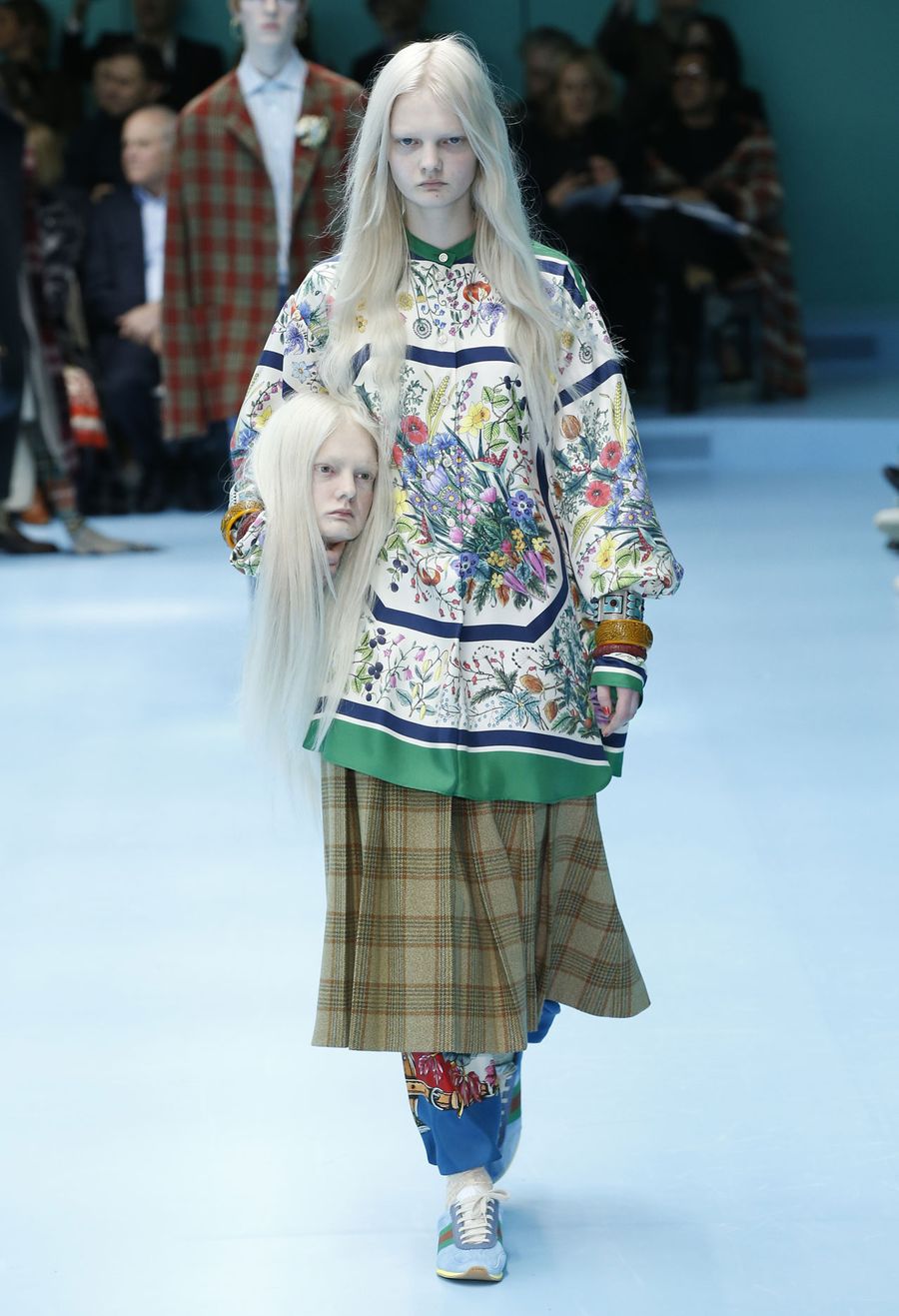
Courtesy of Gucci.

Courtesy of Gucci by Ronan Gallagher.

Courtesy of Gucci.
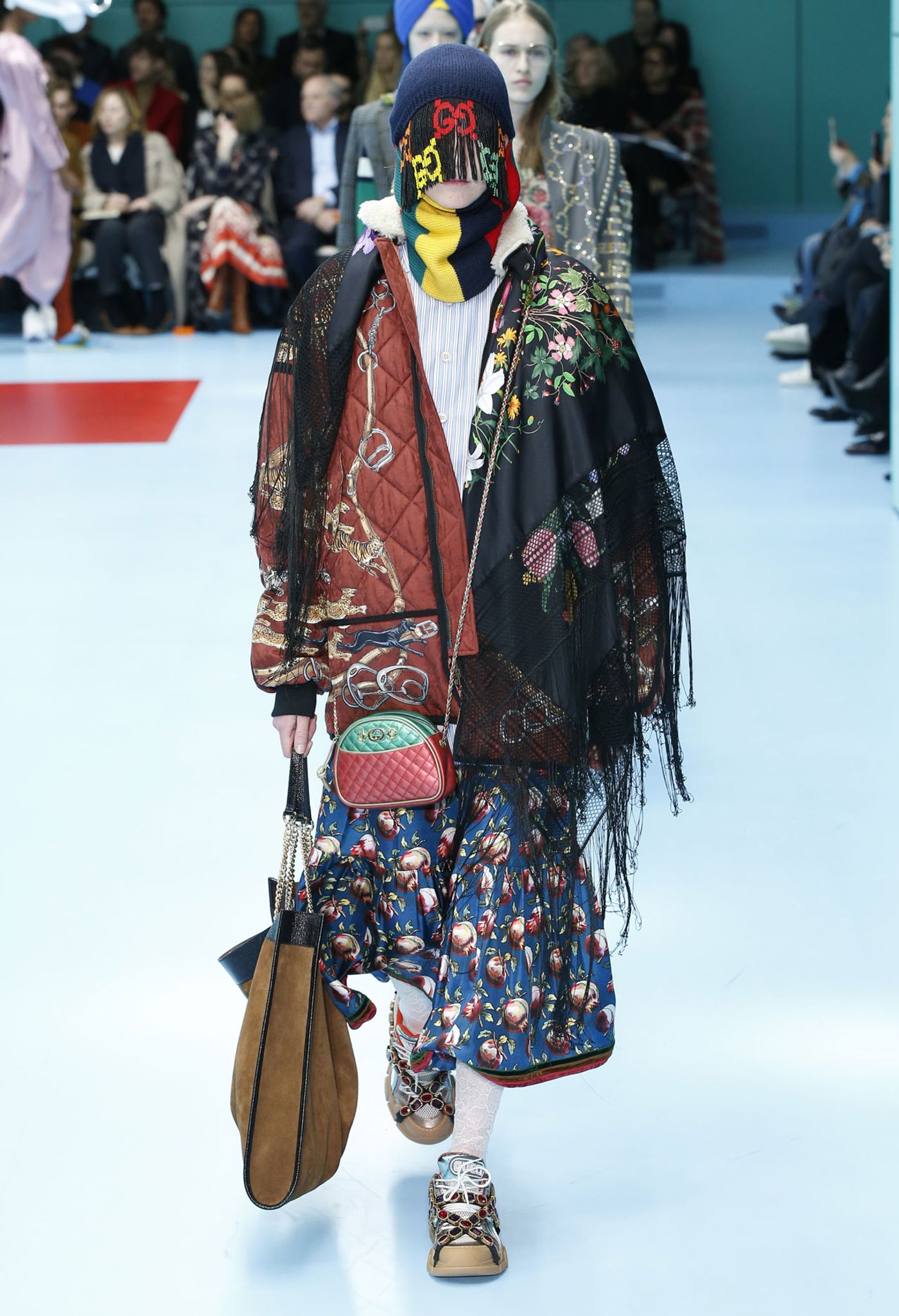
Courtesy of Gucci.
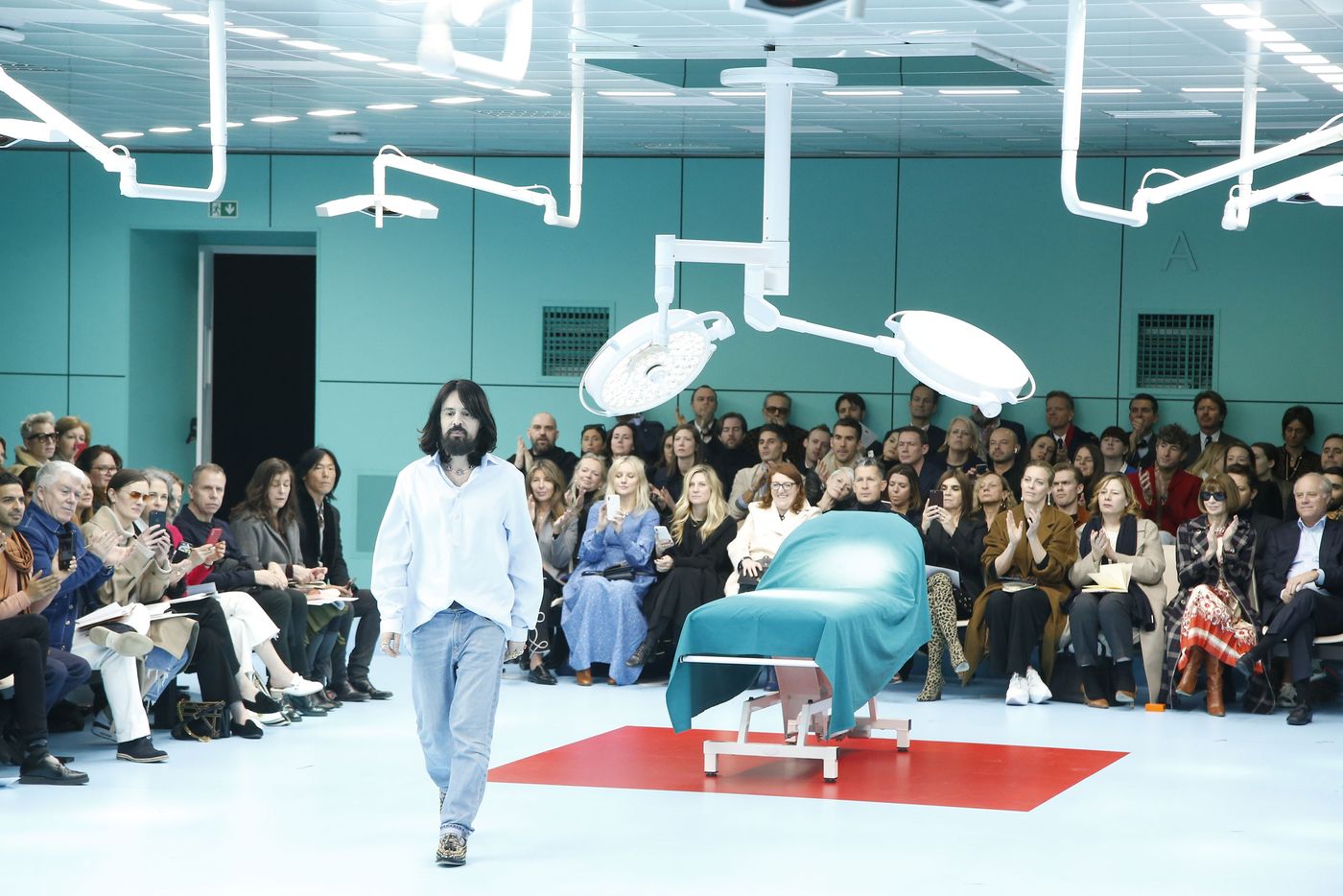
Alessandro Michele’s bow.
Courtesy of Gucci by Dan Lecca.
